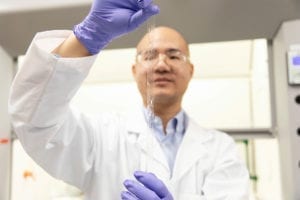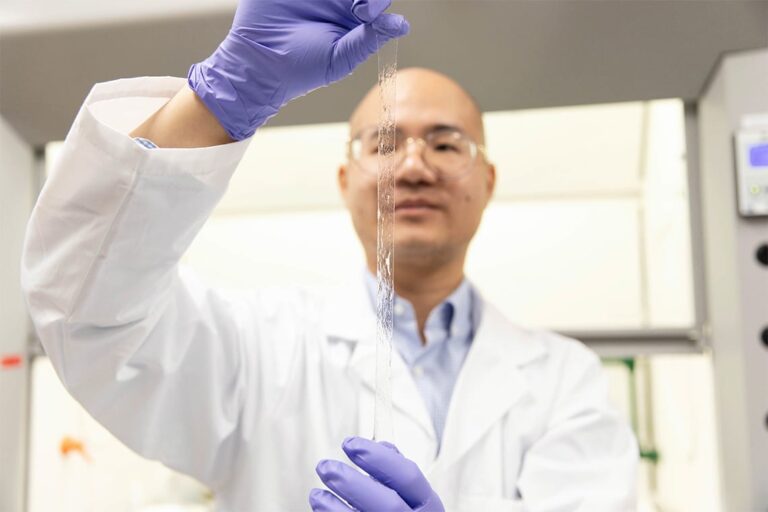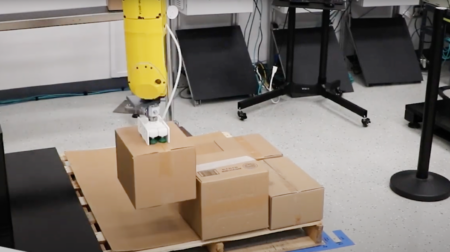Researchers at the University of Toronto have developed a stretchy, transparent and self-powering sensor that could open doors to flexible robots made completely out of polymers.
The artificial ionic skin, or AISkin, records the complex sensations of human skin and the researchers believe the technology could lead to advancements in soft robotics.
One possible application is soft robotic grippers used in factories to handle delicate objects such as light bulbs or food.
The researchers envision AISkin being integrated into soft robots to measure data on things such as the temperature of food or the pressure necessary to handle brittle objects.
“It’s inexpensive and biocompatible – you can put it on the skin without any toxic effects. It’s also very adhesive, and it doesn’t fall off, so there are so many avenues for this material,” said Xinyu Liu, an associate professor in the department of mechanical and industrial engineering in the Faculty of Applied Science & Engineering.

The adhesive AISkin is made of two oppositely charged sheets of stretchable substances known as hydrogels.
By overlaying negative and positive ions, the researchers created what they call a “sensing junction” on the gel’s surface.
When the AISkin is subjected to strain, humidity or changes in temperature, it generates controlled ion movements across the sensing junction, which can be measured as electrical signals such as voltage or current.
“If you look at our skin, how we sense heat or pressure, our neural cells transmit information through ions – it’s really not so different from our artificial skin,” said Liu.
While human skin can stretch up to about 50%, the AISkin can reportedly stretch up to 400% of its length without breaking.
Over the next year, Liu’s lab will focus on further enhancing AISkin, aiming to shrink its sensors through microfabrication.
They’ll also add bio-sensing capabilities to the material, allowing it to measure biomolecules in body fluids such as sweat.
The research is supported by the Natural Sciences and Engineering Research Council of Canada and the Canada Foundation for Innovation.








